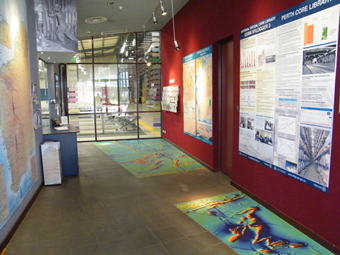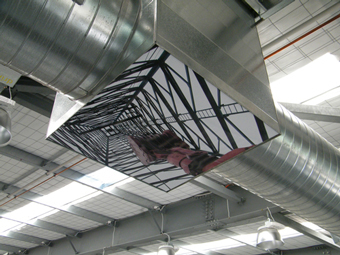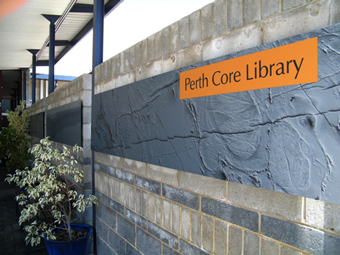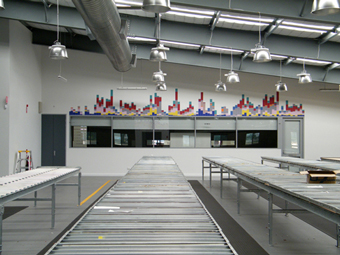Director General's foreword
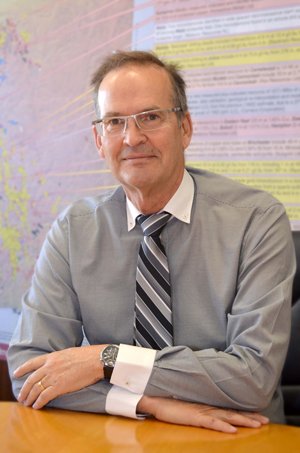
As the half way point of the year rapidly approaches, I’d like to welcome readers to the DG’s eNews, the last for the Department of Mines and Petroleum (DMP).
The first of July heralds a new beginning for the Department of Mines, Industry Regulation and Safety, an amalgamation of DMP and parts of the Department of Commerce.
The new department will regulate the mining, building and construction industry and will elevate the focus on worker safety. It will also assume consumer protection responsibilities. Business will continue as usual over the coming months as we transition to the new department.
It would be remiss not to thank Dr Tim Griffin who is retiring this month. Dr Griffin has been with the department for 37 years, starting as a geologist and most recently as the Acting Director General. We thank him for his contribution to the industry in Western Australia and overseas.
In this edition of DG’s eNews we take a look at how the department is securing the State’s energy security with the approval of our largest gas storage facility, following the signing of an agreement between the State Government and DDG Tubridgi Pty Ltd.
The 2017 Acreage Release is now open for five onshore release areas in the Canning Basin, varying in size from 5324 to 6667 square kilometres. Interest in the Canning Basin has increased in recent years and the release provides explorers with new opportunities to invest in the oil and gas sector.
Towards 2020 is the Department of Mines and Petroleum’s (DMP) vision for a safe and healthy resources industry and covers all legislation administered by the Resources Safety Division.
It is the first of a series of high-level three-year rolling strategies to guide Resources Safety’s efforts to raise awareness and seek compliance in the Western Australian resources sector, going beyond the day-to-day inspectorate activities.
The DG's eNews is a valuable tool for anyone interested in the future of the Western Australian mining and petroleum industry and provides updates on the latest activities of the department, so please recommend it to your industry colleagues.
We look forward to bringing you a new look DG’s eNews next quarter from the new Department of Mines, Industry Regulation and Safety.
David Smith
Acting Director General
Department of Mines and Petroleum
Leading the transition to a new department

Former Acting Director General of the Department of the Premier and Cabinet David Smith has been appointed to head up the transition to the new Department of Mines, Industry Regulation and Safety.
Mr Smith, who took up his post with the Department of Mines and Petroleum (DMP) last month, said he was very excited about his new role.
“I thought that if there are opportunities that arose in an agency which focusses on service delivery I would be interested in pursuing that opportunity,” Mr Smith said.
“It also helped that I have had a fair amount of contact with (former Director General) Richard Sellers and (former acting Director General) Tim Griffin in my previous role.
“I felt like I knew the executive and understood what they were trying to achieve at the department.”
Mr Smith has met with staff from DMP and the Department of Commerce and has been working with them on the transition to the new department.
“There has been quite a lot of work to do before the July 1 start for the new department, and we are already looking forward to phase two of the transition which will develop a new structure to bring together the elements of the two previous departments,” he said.
“This is a very exciting time, which I am sure will also present challenges, but I look forward to making the transition as easy as possible across both agencies.
“My main message to industry is that it will be business as usual during this period and a key objective is to ensure that we have a seamless transition that does not interrupt the high standard of service delivery that we will continue to provide.”
The new Department of Mines, Industry Regulation and Safety will amalgamate DMP with the safety, industry regulation and labour relations functions of the Department of Commerce.
Mr Smith was appointed DPC Acting Director General in August 2016, and had been the Deputy Director General since August 2008.
Before DPC, Mr Smith was a member of the Corporate Executive of the Department of Treasury and Finance (DTF), with responsibility for economic policy. He was in the DTF in a variety of positions for 12 years.
Mr Smith also has more than 20 years of experience in the Commonwealth public service, including the Department of the Prime Minister and Cabinet and an overseas posting in Geneva with the Department of Foreign Affairs and Trade. He has also worked with a private economic consultancy in London for three years.
In other moves, DMP Deputy Director General Michelle Andrews has moved to DPC to assist with the State Government’s public sector renewal program.
The government has initiated a Service Priority Review, led by an independent panel, to provide recommendations on significant and lasting change across the sector.
The Service Priority Review will report back to the State Government in October, and Ms Andrews heads up the Secretariat supporting the independent panel.
Dr Tim Griffin has also indicated his intention to retire from the department after 37 years of services.
Human and organisational factors paper awarded at conference
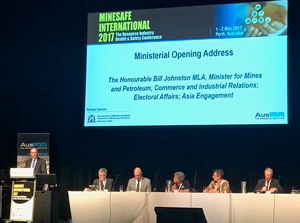
A Department of Mines and Petroleum-commissioned and co-authored paper on human and organisational factors was awarded Best Paper at the Minesafe International 2017 conference.
The paper proposed a 'top 11 human factor topics for the Western Australian mining industry' and was authored by State Mining Engineer Andrew Chaplyn, Keil Centre founder Ronny Lardner and former District Mines Inspector Gareth Pickering.
"Shifting focus from safety culture to the concept of human and organisational factors offered distinct opportunities for the department," Mr Chaplyn said.
"The concept is already used within the petroleum industry. Expanding it to include mining provided an opportunity to have consistent messaging across the resources sector."
In the paper, the authors found that the concept of human and organisational factors provided a complete framework that integrates the impact of people, equipment, systems and organisational influences on safety outcomes, rather than just one element.
"It also gives the department an opportunity to leverage off extensive literature and industry expertise in the field to help raise awareness and develop regulatory tools," Mr Chaplyn said.
To emphasise the focus on human and organisational factors, the department held a series of forums targeting mining, petroleum and major hazard facility operators.
The most recent forums were held in May in Perth and Karratha.
"The forums aimed to explain the importance of human and organisational factors for improving health and safety in the State’s resources industry," Mr Chaplyn said.
“Presenters used case studies to highlight important safety lessons and demonstrate the benefits of managing human and organisational factors.
"The forums were also an opportunity for the department to outline its regulatory approach regarding human and organisational factors."
More information about resources safety, including information about human and organisational factors, is available from department’s website.
Strengthening relationships with Asia
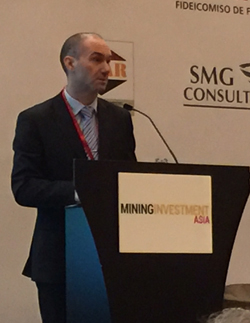
The Department of Mines and Petroleum’s (DMP) Asian engagement strategy has been high on the agenda for 2017 with two visits to the region this quarter.
In March, DMP’s Acting Deputy Director General, Dr Phil Gorey and Senior Manager of Mineral Promotion, Dr Gaomai Trench attended this year’s Mining Investment Asia conference in Singapore.
DMP has had a continual presence at the conference for many years. Dr Gorey delivered a presentation this year on mining investment opportunities in Western Australia and Dr Trench represented the department on the Women in Mining panel discussion.
“WA continues to be seen as a destination of choice for resource investment and this was highlighted in several of the presentations throughout the conference,” Dr Gorey said.
“According to many of the presenters, the annual survey on the attractiveness of different jurisdictions for international mining investment, run by the Fraser Institute, is seen as a particularly relevant and important benchmarking tool. This level of reinforcement bodes extremely well for WA particularly given our current ranking as the third most attractive jurisdiction for mining investment in the world.”
Dr Trench, who provided a WA perspective on gender diversity in the mining environment at the Women in Mining forum, also added that the WA Government stand and the materials provided were very well received by visitors to the booth.
“A general consensus at the conference this year was that the demand for gold will continue to grow so the department’s information was timely and topical,” Dr Trench said.
“The main drivers for the demand include the reduced confidence in financial markets, the expected fall in the American dollar later this year, the value of gold rising in every major currency and the increasing demands for gold in India due to currency policy changes.
“Another big focus was around battery metals; lithium, zinc, cobalt and graphite. This is being driven by global policies for low carbon emissions, new information and communication technologies, and other new technologies such as electric cars.”
In keeping with the strategy around long term engagement with Asia, Dr Trench also attended Mines and Money Asia in Hong Kong the week after with the department’s then Acting Director General, Dr Tim Griffin.
Similar themes were covered at the conferences and Dr Griffin said they provide an excellent opportunity to speak to companies who have been investing in Western Australia for some time and to discuss any of their concerns in person.
During the three days in Hong Kong, DMP spoke to a range of companies and investors, including the senior management of CITIC who run the SINO Iron Project at Cape Preston, located 100km south west of Karratha, in Western Australia’s resource rich Pilbara region.
“Very often there may be expectations from a company that the Government can do more to help them and our meeting with CITIC served as an opportunity to explain in a relaxed environment the limitations of the government’s role in private sector investment projects.
“Western Australia has very high safety standards, very high environmental standards and we also have low sovereign risk – which is why we attract so much investment. However, because our processes and procedures are extremely thorough they can take longer than companies expect, particularly if they fail to understand the Government requirements,” Dr Griffin said.
“China is growing as a highly sophisticated, global manufacturing hub and will be consuming the commodities wanted by the rest of the world. Almost everything that is produced in Western Australia is important to China, whether it’s the raw materials for steel or aluminium or the exciting metals like tantalum or lithium,” he said.
“It’s so important for Western Australia to maintain its profile with Chinese manufacturers, especially those looking for metal supplies for their manufacturing business. By sharing what our State has to offer we give them the confidence we’re still on our game and continuing to discover more.
Dr Griffin added the State’s long and continued success as a major supplier of metals around the world can often work against it.
“Companies assume we must be exhausting our supplies and that there can’t be too many new opportunities. In reality, it’s the opposite and companies need to appreciate the sheer size and scale of Western Australia and the great potential that we have to offer, including the new speciality metals.
“The State is by no means getting close to running out of resources and the fact that the iron ore industry has been going so long, and is still growing, is a great example of that.”
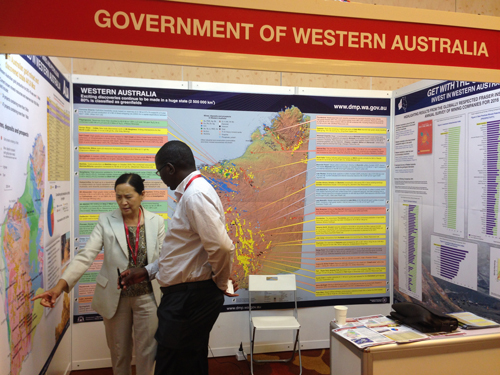
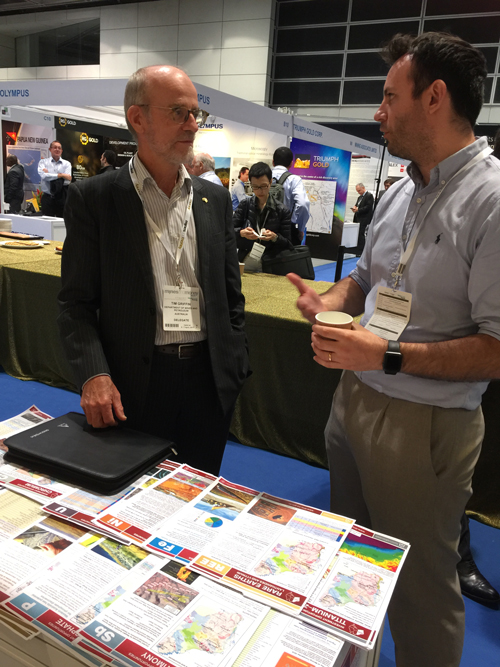
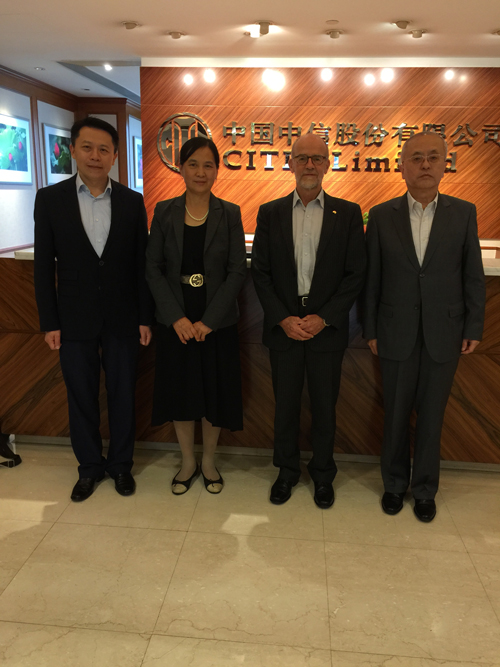
Raising the alarm to prevent injuries
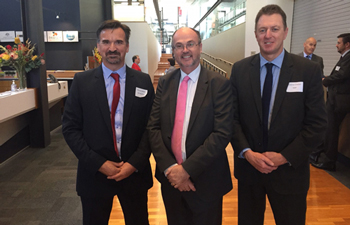
A Western Australian developed web tool that analyses data to identify the likelihood of incidents and injuries occurring in a workplace was launched as part of World Day for Safety and Health at Work.
DMP Director Mines Safety and State Mining Engineer Andrew Chaplyn said data-based decision making was a key part of making further improvements to safety in Western Australia’s mining industry.
“The Injury Alarm is a great tool where you can not only use departmental data, but also other data that you may have on your mine site,” Mr Chaplyn said.
“This data can help give context around safety systems and risks for your site.”
A free lite-version of the Injury Alarm was officially launched by Mines and Petroleum Minister Bill Johnston on 27 April 2017.
Developed in consultation with industry, the website helps organisations recognise risks and prevent dangerous incidents from occurring.
"The best way to protect workers is to understand the risks associated with a job and put controls in place that reduce or remove those risks," Mr Johnston said.
"That is why we must increase our knowledge of risks - something that the Injury Alarm will enable us to do."
Developed in consultation with industry, the website helps organisations recognise risks and prevent dangerous incidents from occurring.
To use Injury Alarm, companies just log their accident and incident data. Injury Alarm then utilises statistical processes to determine the risks.
The website gives suggestions on how companies can improve their safety to help prevent deaths and injuries.
Dr Marcus Cattani developed the algorithms for Injury Alarm, with support from the Department of Mines and Petroleum.
"The research done by Dr Cattani and his colleagues in developing the Injury Alarm ensures safety lessons from previous accidents are not lost," Mr Johnston said.
"The Injury Alarm is an important tool we can use to help protect Western Australian workers."
Shining the light on excellence

Save the date! The Department of Mines and Petroleum’s (DMP) Awards for Excellence Ceremony is set to be a night to remember.
The event will see DMP’s Community Partnership Award, Safety and Health Awards and the Golden Gecko Awards for Environmental Excellence come together in one prestigious celebratory ceremony.
DMP’s acting Director General David Smith said he was confident the awards ceremony, on Thursday 26 October, would be a huge success.
“I have no doubt that the department’s Awards for Excellence night is going to be a fantastic event which will allow us to showcase and celebrate Western Australia as a world leading resources destination,” Mr Smith said.
“The Golden Gecko is well known for recognising leading practice and innovation towards the responsible development of the State’s resources and last year was the inaugural Community Partnership Awards showcasing some truly exceptional partnerships throughout the State.”
Mr Smith said the introduction of the Safety and Health Resources Sector award was another exciting addition to the celebrations and is in line with the stronger focus on safety that the new department will have.
“For the first time, the department will also celebrate the Safety and Health Resources Sector Awards, which were previously run by the Chamber of Minerals and Energy.
“We will recognise the examples of outstanding leadership and innovations that are constantly improving workplace safety across Western Australia, some may even have international applications.
“More than 40 entries were received for the awards and the judging panels have a big job ahead of them to identify the standout nominations that will be honoured in October,” he said.
Achievements of the finalists for the awards will be highlighted at the awards ceremony before Minister for Mines and Petroleum Bill Johnston announces the respective winners.
To register your interest for the Awards for Excellence Ceremony please email excellenceawards@dmp.wa.gov.au
Towards 2020 vision for Resources Safety
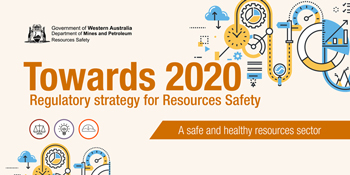
Towards 2020 is the Department of Mines and Petroleum’s (DMP) vision for a safe and healthy resources industry and covers all legislation administered by the Resources Safety Division.
It is the first of a series of high-level three-year rolling strategies to guide Resources Safety’s efforts to raise awareness and seek compliance in the Western Australian resources sector, going beyond the day-to-day inspectorate activities.
Towards 2020 describes the goals, focus areas and measures of success for safety and health initiatives undertaken by the regulator and is presented as a live online resource that is easily accessible, and can be updated as emerging issues and trends are identified.
Resources Safety Division Executive Director Simon Ridge said Towards 2020 provides a framework around how the division deploys its resources.
“It’s important that we are measuring our performance and success, to ensure resources are being applied appropriately,” Mr Ridge said.
“Towards 2020 sets some outcomes to be achieved and how they can be measured.
“This enables us to become a more efficient organisation and better utilise our resources in working with industry to achieve improved safety outcomes.”
The strategy was launched by Mines and Petroleum Minister Bill Johnston at the Minesafe International 2017 conference.
"The safety and health of workers is a high priority of the McGowan Labor Government,” Mr Johnston said.
"Towards 2020 will foster a shared safety and health vision, and how it can be achieved.
"It will help Resources Safety effectively engage with all of its stakeholders, and share important information on health and safety."
Farewell TENGRAPH Online, welcome TENGRAPH Web
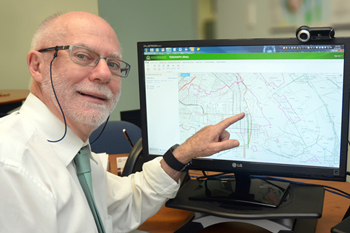
The veteran TENGRAPH Online mapping system is being slowly and gracefully retired from active duty by a bright new user-friendly product called TENGRAPH Web.
The Department of Mines and Petroleum (DMP) is continuing to test and fine tune the new system, which will be rolled out in the coming months.
TENGRAPH Online, which has been in operation since 1992, displays the position of Western Australian mining tenements and petroleum titles, giving an accurate picture of land under mining activity, and is used to determine ground available for mineral exploration.
“It has served the department well, but it is showing its age and has links to technology that is no longer supported,” DMP Mineral Titles Executive Director Dr Ivor Roberts said.
“The new browser-based TENGRAPH Web does everything that the old system could do, and a lot more, giving seamless coverage of the entire State.”
Dr Roberts said that the new TENGRAPH Web was a more business-oriented system with a strong focus on tenements, approvals and increased functionality.
“It is streets ahead of the old system, and has a lot of new bells and whistles, but it will not be a totally new experience for people using DMP’s interactive geological mapping system, GeoVIEW.WA, because there are commonalities with the TENGRAPH Web interface,” he said.
Dr Roberts said that high quality maps could be produced with TENGRAPH Web.
It has a new interface that uses the same pan and zoom mouse commands as Google Maps and it has the ability for users to include overlays of geology and topography.
The new system will operate in tandem with the old TENGRAPH so that people have the ability to use either system until they are comfortable with TENGRAPH Web.
“TENGRAPH Web will be monitored and we expect most people to migrate to the new system within about a month of the roll out, but we will continue to provide access to the old TENGRAPH until everyone is happy.
“We are gathering feedback from selected external users during the testing period and will continue to seek feedback from all users after the new system is rolled out.”
TENGRAPH Web facts and figures:
- The new system will provide links to other DMP systems, including:
- Mineral Titles Online
- Petroleum and Geothermal Register (PGR)
- WAMEX (mining tenement open file exploration reports)
- MINEDEX (mine site and mineral deposit information)
- TENGRAPH Online has about 12,000 registered users.
- Being solely web-based, users will access TENGRAPH Web directly through DMP’s servers, rather through a separate (CITRIX) platform.
- The new interface uses the same pan and zoom mouse commands as Google Maps and GeoVIEW.WA.
- The new system retains all existing TENGRAPH features such as links to Google Earth, Mineral Titles Online, WAMEX, MINEDEX and PGR, plotting tools and custom colouring objects.
- Layers are easier to turn on and off.
- High quality maps can be printed from the new system.
- Geology and topography overlays are included.
- Transparency slider bars can be used to change the visibility on the map.
- Users can save results from searches and selections to a CSV file or shapefile (geospatial vector data format) for use in other Geographic Information Systems (GIS).
- Users can add shapefiles by dragging a file directly onto the map display.
- Landgate aerial photography can be displayed.
- Users have easy access to scanned historical tenement maps.
- TENGRAPH Web will benefit external users through:
- Improved access to DMP spatial and non-spatial information.
- Better service delivery delivered by enhanced functionality.
- Improved appraisal processes integrated with eLodgement.
- Ability to rapidly respond to industry or legislative change because TENGRAPH Web is consistent with the department’s spatial data infrastructure.
The first golden rule of prospecting is safety first
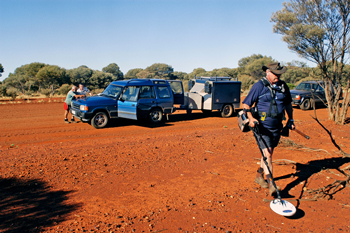
Be careful – that’s the dominant message in the Department of Mines and Petroleum’s (DMP) Seven Golden Rules prospecting campaign now running in the Goldfields and other gold prospecting regions.
“Safety first is a well-known phrase that we have highlighted as the campaign’s number one golden rule for prospectors,” Mineral Titles Executive Director Dr Ivor Roberts said
Dr Roberts said that nearly 1000 Miner’s Rights had been issued since the start of the year, with almost 600 issued since March.
“The cool summer this year created an early start to the prospecting season,” Dr Roberts said.
“We know from the large number of rights issued that there is likely to be a record number of first-time prospectors heading out into regional WA and exposing themselves to the dangers of going bush.
“We’ve undertaken another extensive campaign this year and our message is getting plenty of publicity through the press and broadcast media – including a number of interviews with the ABC - and newsletters published by Shires in the areas prospectors frequent.”
The Seven Golden Rules prospecting campaign is also targeting tourist bureaux, libraries, caravan parks and DMP offices with posters, brochures and booklets.
“As part of the safety first message, we are urging prospectors to carry Personal Locator Beacons (PLBs) in remote areas,” Dr Roberts said.
The device, which can be purchased from most outdoor stores, is considered by search and rescue organisations to be ideal for use in remote areas as it does not rely on telecommunication networks to submit a signal.
“PLBs are the best way of avoiding the sometimes tragic results of getting lost in the Goldfields and the outback,” Dr Roberts said.
“Our message is that if you're not carrying a beacon, you're not taking enough responsibility for your life and it doesn't matter how much gold you find, if you get lost, you risk losing your life.
“Prospecting is great fun and a major drawcard for tourists, but we want people to be alert to the dangers that claimed the life of a prospector only a few years ago.”
The Seven Golden Rules
- Put safety first
• Make sure you have enough water, fuel, maps, first aid supplies.
• Give serious consideration to taking some form of telecommunications and a global positioning system to fix locations, and a Personal Location Beacon (PLB) – it may turn out to be your most important safety device. - Obtain a Miner’s Right permit
when prospecting on vacant Crown land ($25 from any Mining Registrar’s office). - Obtain a 40E permit
when prospecting within an exploration tenement (if you don’t have written permission from the tenement holder), - Get written permission
from the tenement holder when prospecting on:
• a mining lease
• an exploration licence (if you don’t have a 40E permit)
• a prospecting licence - Comply with all legal requirements
when prospecting on a pastoral lease. This includes gaining permission from the pastoralist for access to certain areas. - Show respect when on Crown land
because it is used or set aside for many purposes, including:
• pastoral and grazing activities
• parks and forests
• the use and benefit of Aboriginal people
• mining activities - Fill any holes
that you dig and repair ground that has been disturbed.
Approval of WA’s largest gas storage facility to enhance energy security
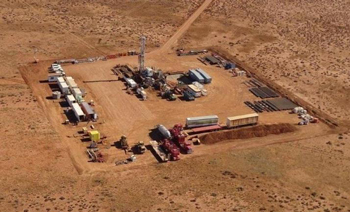
Western Australia’s largest gas storage facility is expected to be operational shortly following the signing of an agreement between the State Government and DDG Tubridgi Pty Ltd.
With an expected total construction cost of $69 million, the facility will utilise the company’s depleted Tubridgi onshore gas reservoir, about 30km from Onslow in the State’s North West.
The project is strategically located in close proximity to the Chevron-operated Wheatstone and BHP-operated Macedon domestic gas production facilities, and will be connected to the Dampier to Bunbury Natural Gas Pipeline by existing gas transmission laterals.
The Department of Mines and Petroleum’s (DMP) Acting Director General David Smith said the project would play an important role in enhancing energy security in Western Australia when fully operational.
“The Tubridgi facility will enable banking of unused gas to cover planned production facility outages,” Mr Smith said.
The agreement provides for effective regulation in respect of safety, environmental and resource management associated with injection, storage and recovery of petroleum.
CITIC Pacific, developer and operator of the Sino Iron magnetite project at Cape Preston, will be the foundation customer under a 10-year gas storage agreement with DDG with options for a further five years.
DDG Tubridgi Pty Ltd is currently negotiating with other companies in the region to sign additional contracts.
The facility has a storage capacity of around 42 Petajoules with daily injection and withdrawal rates of around 50 terrajoules/day.
One of the advantages of the project is that the reservoir is quite shallow at approximately 550 metres, meaning that the required injection pressures are low.
New explanatory notes give greater clarity to petroleum explorers and titleholders
The Department of Mines and Petroleum’s (DMP) Petroleum Division has prepared two explanatory notes for new and existing explorers and current petroleum titleholders and pipeline licensees.
The information documents clarify the legislative options available to petroleum explorers to obtain exploration titles in Western Australia, and the requirements to obtain the Minister’s consent to surrender a permit, lease or licence.
DMP Executive Director Petroleum Jeff Haworth said the department is committed to making resource sector information more accessible to industry and the community to ensure there is clarity around complex legislative processes.
“DMP is committed to continual improvement in this area,” Mr Haworth said.
The explanatory notes are not linked to any legislative amendments or a change in approach, and DMP is seeking to remove ambiguity and provide increased clarity around key policies.
The explanatory notes ‘Obtaining petroleum exploration titles in Western Australia’ and ’Surrender of petroleum titles and pipeline licences in Western Australia’are available at http://www.dmp.wa.gov.au/Petroleum/Schedule-and-guidelines-1603.aspx
New mobile geospatial app is moving with the times
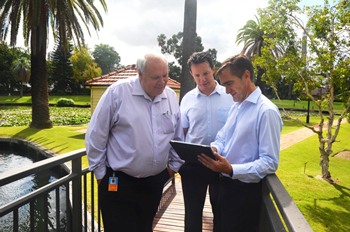
If you see a group of people standing around a smartphone looking excited, they may not be playing Pokemon.
They may be using the Department of Mines and Petroleum’s (DMP) mobile app for its popular online mapping system for mobile devices, WA Geology.
And it’s hard to know who is more obsessive – the users of the app or the team that developed it.
Geoscience Spatial Services Manager Neville D’Antoine agrees, citing a shared passion for cartography (“it’s in the blood, I think”) with son Joel, a Senior Spatial Database Analyst, and Spatial Systems Manager Darren Wallace.
“Since the launch earlier this year at the Geological Survey of WA’s Open Day, we’ve pretty much had a constant stream of emails and feedback asking for more changes and enhancements,” he said.
Neville said the public interest in it had been amazing.
“We had an unpublicised ‘soft launch’ before the official one, and only a couple of days later one of mining registrars told us that while he and a few other people were trying out the app in the field near Kalgoorlie, a chap from the Eastern States came up to them and told them how impressed he was with it,” Neville said.
Asked what made the app so popular, Neville first points out that technically it isn’t actually an app.
“There’s a bit of confusion about the word app because people don’t have to download anything from Google or Android or anything like that to use WA Geology,” he said. “This is an application that just runs on a device, using the grunt from DMP’s servers.”
“It’s being streamed by us, so if something changes like a file notation area or a title, users will see that change within three minutes.
“If you’re out in the field using WA Geology – provided you have access to a signal – you will be able see those changes.”
Neville said that he had been quite surprised to get coverage through most of the Pilbara on a recent trip “and that was going through Nullagine and Marble Bar, even out to Pardoo”.
But, as Darren points out, if you’re online it doesn’t matter whether someone is a joint venture partner in New York or a prospector in Kalgoorlie, they can access the data.
“The big advantage of an app like this is that when a company has executives away at a conference in Canada or China or wherever, they can just pull out their phone or tablet and start pinpointing tenements or particular geology structures,” he said.
Joel said that one of the biggest improvements to the app was the addition of 86 new layers to the original 40.
“It’s an enormous amount of information and that’s why users really need to determine what’s relevant when they’re using it,” he said.
It took the three men about three months to get the app up and running, but they point out that this was actually a very short timeframe.
“The beauty of this software is that it was straight out of the box from Geocortex,” Neville said. “We didn’t have to build it from scratch by writing code, we configured it.”
It was still demanding and repetitive work that Joel described as “sometimes frustrating, sometimes a piece of cake”.
The three men have a lot respect for the software they’ve been working with, pointing out that it is smart enough to work out what device someone is using and reconfigure itself to suit a tablet or a mobile phone.
“I haven’t come across a device that it can’t run on,” Neville said. “It doesn’t matter whether you’re using Windows or a Mac or an Android phone or an iPhone.”
The feedback from users has been overwhelmingly positive, with most praising the much improved speed and the commonality of the interface with other DMP programs such as GeoVIEW.WA and the new TENGRAPH Web now being tested.
“You can use the same set of skills and tools such as pan and zoom across all of these applications,” Neville said.
“However, there are complex tools in here that the average user doesn’t know how to use and we can use them to help people find what they’re after.”
DMP initiative to integrate processes and IT systems improves environmental outcomes
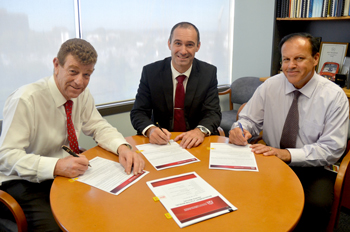
An initiative of the Department of Mines and Petroleum (DMP) to integrate more of its processes and IT systems across the agency has resulted in three business areas combining their Quality Management Systems (QMS).
The department’s Environment and Petroleum Divisions, along with the Royalties Branch, have combined their QMS and achieved AS/NZS ISO 9001 re-certification after being audited in February 2017.
“Working across the Petroleum, Environment and Royalties areas to produce leading regulatory practices for petroleum has reinforced DMP’s reputation as a leading regulator,” Jeff Haworth, Executive Director Petroleum Division said.
“Independent auditing of our processes can also provide assurances to the Western Australian community that our regulatory framework is robust and continually scrutinised.”
The policy is reviewed on an annual basis.
Dr Phil Gorey, Executive Director Environment, said integrating the Quality Management processes with the Petroleum Division and the Royalties Branch is an excellent initiative and can only help the Environment Branch to continually improve the services that it provides to its customers.
“Surveillance of the business areas system certification is conducted by independent auditors qualified in inspecting, verifying and testing to ensure the systems and services are compliant with regulations and standards,” Dr Gorey said.
David Norris, General Manager Royalties Branch said that the QMS is established, documented and maintained, with the specific objective of ensuring that all work performed by the Royalties Branch meets the specified requirements of the quality objectives at a consistent level.
“The structure is based on the principles of the previous standard and the branch is well placed to meet the requirements of the new AS/NZS ISO 9001:2015 standard by February 2018,” Mr Norris said.
Under QMS AS/NZS ISO 9001 the business areas are certified to:
- provide leadership and excellence in the delivery of regulatory services and policy advice to improve environmental outcomes for mining, petroleum and geothermal exploration and development
- provide a regulatory environment that enables the responsible development of petroleum and geothermal energy resources in Western Australia
- commit to achieving quality within all the organisations’ area of responsibility associated with administering petroleum and mineral royalty legislation.
The AS/NZS ISO 9001 Certificate of Registration confirms that the management systems comply with the requirements of the standard for provision of regulatory services for the minerals and petroleum industries and the community, and provide policy advice to the Minister for Mines and Petroleum.
The business areas have adopted Quality Assurance (QA), a customer focused strategy, to enhance the effectiveness of all its activities to maximise reliability and performance.
The strategy, with continuous improvement, system documentation and regular internal audits, aims to meet specifications of the International Quality Management Standard ISO 9001 across all business areas.
Effective QA helps promote credibility about the integrity of management processes, and gives business areas a stronger customer focus, to which it is already committed.
As a pre-condition, QA requires a quality policy, business online systems, records, forms and templates of all petroleum, environment and royalties related processes and training to meet the specified requirements of the customer and quality objectives at a consistent level.
DMP executive staff of the business areas are responsible for ensuring that the QA policies are implemented, understood and maintained at all levels.
The business areas are committed to achieve certification under the new AS/NZS ISO 9001:2015 standard by February 2018. The new standard strives to give additional momentum to the continuous and systematic improvement of processes.
Suggestions are welcome and form part of the QA process to help us to improve our service. You can make feedback/suggestions via the Departments Feedback and complaints system.
DMP calls for nominations from industry for 2017 State acreage
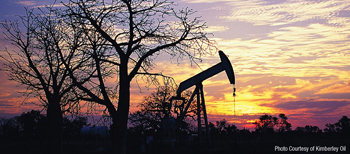
Last month the Department of Mines and Petroleum (DMP) opened the 2017 Acreage Release at the annual Australian Petroleum Production and Exploration Association (APPEA) Conference in Perth.
Applications for bidding are now invited for five onshore release areas in the Canning Basin, varying in size from 5324 to 6667 square kilometres.
“The release provides explorers with new opportunities to invest in the oil and gas sector and enables industry to undertake longer term planning to support the ongoing investment in, and development of, Western Australia’s petroleum resources,” DMP Executive Director Petroleum Jeff Haworth said.
Mr Haworth said interest in the Canning Basin had increased in recent years with new oil play discoveries at Ungani in October 2011 and Ungani Far West 1 announced in March 2016.
“There has also been good oil and gas shows in the Ordovician Goldwyer Formation shale in the Theia 1 well drilled in July and August 2015,” he said.
The northern three release areas L17-1 to L17-3 are contiguous and collectively cover 17,664 square kilometres and are accessible from Broome by the Great Northern Highway.
“These are among the best explored regions of the Canning Basin where 15 wells have recorded hydrocarbon shows including Looma 1, Acacia 2, Mirbella 1 and 2 and Sally May 1,” Mr Haworth said.
The southern two release areas L17-4 and L17-5 are also contiguous and collectively cover 12,905 square kilometres and are regarded as frontier acreage with much less on-ground exploration than the northern three release areas.
“They may contain salt-related traps in areas of the basin that lack major block faulting and are accessible by the Kidson Track, the Kiwirrkurra Road and the Canning Stock Route,” Mr Haworth said.
The closest well is Gibb-Maitland 1, drilled during December 2012.
Applications can only be made online, and it is recommended to register two days before bids close at www.dmp.wa.gov.au/pgr
The nomination period for the 2017 acreage release will close at 4pm WST on 1 February 2018. Late nominations will not be considered.
Further information is available at the acreage release web page.
Once the most deserving bidder is announced, they must first successfully gain Native Title agreement before an Exploration Permit (EP) is granted. Until that occurs no petroleum activity can be undertaken on the release areas.
Once an EP is granted by DMP it is for a period of six years.
The granting of an EP, for a six year period, only gives the title holder the exclusive right to explore. Petroleum activities which the title holder intends to carry out are rigorously assessed and approved by DMP before work can begin and, where appropriate, multi-agency approvals will be sought by DMP such as from other agencies, such as the Environmental Protection Authority.
Proposed activity adjacent to sensitive areas such as national parks, towns or drinking water protection areas would be assessed under the State’s multi-agency approvals process.
Petroleum companies are legally required to obtain consent from farmers and private land owners and occupiers before they can carry out activities on their land. This consent can include agreements concerning compensation.
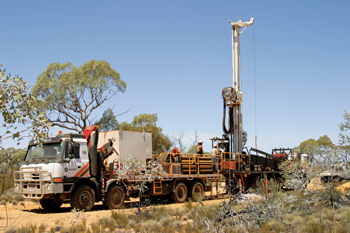
New WA petroleum exploration guidelines for assessment of exploration permits
The Department of Mines and Petroleum (DMP) has introduced changes to the guideline for the assessment of petroleum exploration permits.
The changes include drilling reservations and transfers to become a registered holder of a petroleum title in Western Australia.
The new guidelines will be applicable to the acreage release announced in May 2017 and will be published with the acreage release documentation.
The new Western Australian Petroleum Guideline – Criteria for Assessment replaces the Western Australia Petroleum Guideline for Acreage Release Criteria for Assessment.
The latest revision also includes guidance on:
- the assessment for the award of petroleum exploration permit sought under section 31 and drilling reservations under section 43B of the PGERA67 by way of exercising an acreage option granted with a special prospecting authority;
- transfer applications to become a registered holder of a petroleum title in Western Australia, under section 72 of the PGERA67 and section 78 of the PSLA82.
- the methodology the Minister will employ for determining the most deserving applicant.
The new guideline revision is not the result of legislative amendments or changes to policy interpretation, but to give greater clarity to petroleum applicants and provide transparency of process to ensure consistent outcomes.
The guidelines outline the assessment criteria and process to help companies prepare a competitive, bid which meet the minimum requirements and ranking process used by the department.
The new guidelines are available on the website.
Artworks add finishing touch to Core library extension
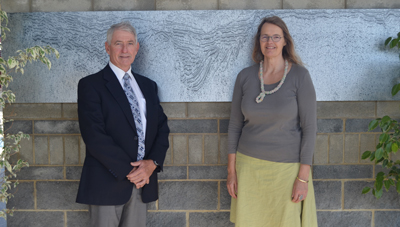
Colourful artworks have added a finishing touch to the $7.3 million extension project at the Perth Core Library in Carlisle.
Western Australia’s vibrant geological formations and the technology of its mining industry inspired the artworks on the walls, floors and ducts of the Department of Mines and Petroleum’s facility.
The library, which stores drillcore samples that can be studied by researchers and exploration geologists, underwent a massive transformation in 2016 to ensure it would have sufficient capacity to store the forecast delivery of core and cuttings until about 2033.
Artist Dr Nien Schwarz recently conducted a tour of her collection of works titled ‘Core Values’, which features 10 interrelated pieces across four zones in the library and adds the finishing touches to the extension project.
DMP Facilities Services Project Manager Andrew Goss said the art project was undertaken through the WA Government’s Percent for Art Scheme operated by the Department of Finance and the Department for Culture and the Arts.
“The scheme employs Western Australian artists to deliver artwork for major new public buildings,” he said.
“This amazing project could not have been undertaken without the dedication of talented artist Dr Nien Schwarz and the support of our project partners.
“The works reflect the library’s core business of archiving drillcore, providing core viewing areas and constructing rapid spectroscopic logging and imaging to advance research and exploration.”
Dr Schwarz told the tour group that she grew up in Canada in a family where several members worked in geology or related fields, which sparked her interest in the topic and drew her into remote regions.
She worked in bush camps and cooked her way across the Arctic supporting Canadian Geological Survey expeditions and has also volunteered for Australian scientific crews.
Currently a senior lecturer at Edith Cowan University, her artistic works linked science and art, with fieldwork providing the opportunity to explore and gather materials for her pieces.
Dr Schwarz said working on the core library project had been a great experience and being able to closely collaborate with DMP staff was a key factor in creating site-specific pieces.
“There was a flexible approach so you could mix and match in a sense,” she said.
“I’m thrilled and it’s certainly been a highlight of my career.”
A horizontal sequence of shimmering etched aluminium composite panels on the outside walls greet visitors to the library, whereas the three dimensional vinyl artwork ‘Aerial Tread’ on the foyer floor creates a floating sensation using colourful aeromagnetic imagery from the Eastern Goldfields region.
Other artistic works include photographs, paintings created using hand-prepared natural rock pigments, poetry, and a graphic log showing mineral analysis from an exploration core that wraps around three sides of the HyLogger room.
Fact file:
- Expansion works at the new facility have increased the core library storage area by 3,500 square metres nearly doubling the number of pallets it can store from 8,640 to more than 15,000.
- The Perth Core Library came into official existence as a secure facility in 2003 but the Government of Western Australia has been storing core and cuttings on site ever since the first onshore petroleum well was drilled at Rough Range in 1953.
- The core library stores mineral and petroleum core and cuttings obtained from industry under various State and Commonwealth legislation and also houses geotechnical drilling and stratigraphic core and rock samples collected by the Geological Survey of Western Australia (GSWA).
- The facility also operates as the western hub of the National Offshore Petroleum Data and Core Repository on behalf of National Offshore Petroleum Titles Administrator (NOPTA) and Geoscience Australia, and will store two-thirds of all Commonwealth-managed petroleum core from offshore drilling.
Some of the artworks in the ‘Core Values’ collection at the Perth Core Library in Carlisle. Photo credit: Nien Schwarz
